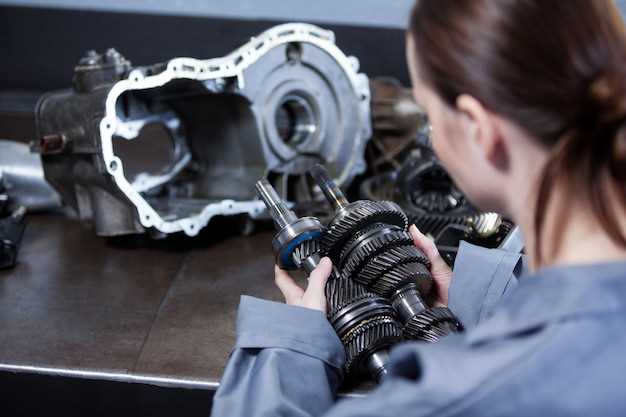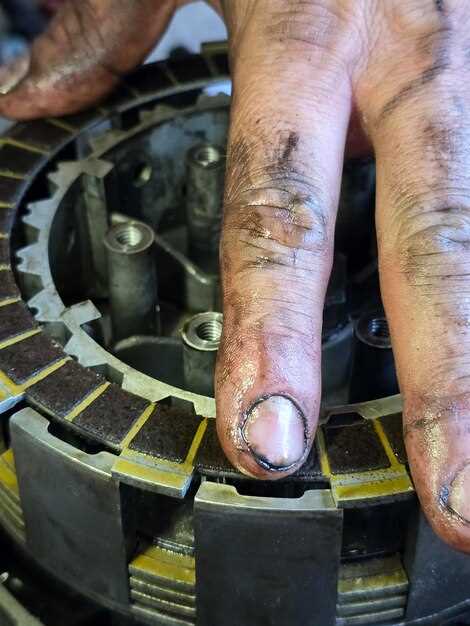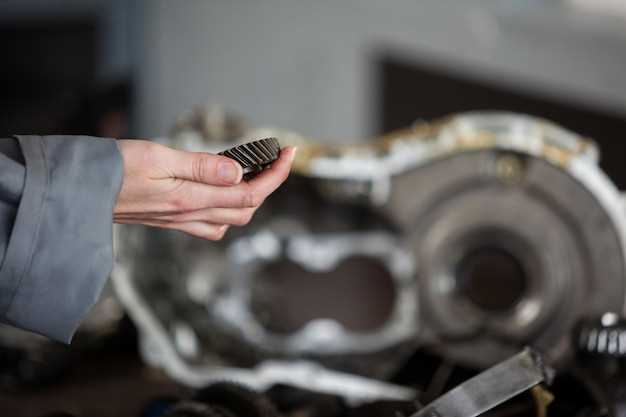
The clutch plays a pivotal role in the overall performance of a racing vehicle, serving as the critical link between the engine and the drivetrain. In high-stakes racing scenarios, where every millisecond counts, the efficiency and responsiveness of the clutch system can determine the outcome of a race. Enhancing clutch performance is not just about speed; it encompasses durability, precision, and adaptability under various racing conditions.
As racing technology advances, so does the demand for higher performance clutches that can withstand extreme forces while providing optimal engagement and disengagement. Factors such as material selection, design engineering, and thermal management are vital components that can drastically improve the effectiveness of a clutch in high-performance applications. By focusing on these elements, racing teams can optimize their vehicles for improved acceleration, smoother shifts, and ultimately, faster lap times.
Furthermore, understanding the relationship between clutch performance and other vehicular systems is essential for achieving a cohesive racing strategy. From engine tuning to transmission dynamics, each aspect of the vehicle must work in harmony to maximize performance. Investors in racing technology must prioritize clutch enhancements to gain a competitive edge, as this seemingly small component can have a monumental impact on overall race performance.
Choosing the Right Performance Clutch Material

Selecting the appropriate material for a performance clutch is crucial for optimizing racing efficiency and durability. The choice of material directly affects heat resistance, friction characteristics, and overall engagement performance during high-stress situations encountered on the racetrack.
One of the most common materials used for performance clutches is organic friction material. This choice provides excellent initial bite and a smooth engagement, making it ideal for street applications or lighter racing activities. However, organic clutches tend to fade under extreme conditions and may not withstand prolonged high temperatures, compromising performance.
Another viable option is ceramic friction material, known for its high temperature resistance and minimal wear. Ceramic clutches excel in high-performance applications, delivering consistent engagement even under severe racing conditions. They offer excellent longevity but may come with a trade-off in terms of pedal feel and increased clutch chatter.
Kevlar is also a popular choice, offering a balance between the forgiving characteristics of organic materials and the durability of ceramics. Kevlar clutches provide a smooth engagement, making them suitable for both street and track use. This material can handle higher temperatures and provides a good compromise between performance and driver comfort.
Finally, metallic clutch materials, often combined with other composites, can deliver superior performance in extreme racing scenarios. While these materials can handle intense heat and abuse, they typically require more precise footwork due to their on-off engagement nature, making them less suitable for beginners.
When choosing a performance clutch material, consider the specific demands of your racing environment, including vehicle power output, track conditions, and driver skill level. Selecting the right clutch material can significantly enhance overall performance, ensuring that your vehicle delivers maximum power to the ground effectively.
Tuning Clutch Engagement for Optimal Acceleration

In the realm of racing, the clutch plays a crucial role in determining a vehicle’s acceleration performance. Fine-tuning clutch engagement is essential for achieving maximum efficiency during race scenarios. Optimizing this engagement allows the driver to harness the engine’s power effectively, translating it into improved speed and quicker lap times.
The key to proper clutch tuning lies in the adjustment of the engagement point. The engagement point refers to the specific moment when the clutch begins to transmit power from the engine to the drivetrain. If the engagement point is too low, it can result in unnecessary slipping, leading to delayed acceleration. Conversely, if it is too high, the vehicle may stall or struggle to gain traction, significantly hampering performance.
To achieve optimal acceleration, racers often employ a combination of factors when tuning clutch engagement. The first is the choice of clutch material, as different compounds can withstand varying degrees of heat and stress. The right material will enhance grip during engagement, helping to prevent slippage while ensuring peak torque delivery.
Another crucial aspect is the adjustment of the spring pressure in the clutch assembly. Increasing the spring pressure can improve engagement response, resulting in a more direct connection between the engine and wheels. However, this must be balanced against the driver’s ability to manage the clutch during racing conditions, as excessive pressure can lead to fatigue and inconsistent launches.
Additionally, the use of adjustable clutch masters and slave cylinders allows for precise control over hydraulic engagement. This adjustability enables racers to fine-tune engagement characteristics based on track conditions and individual driving style, further enhancing overall performance.
Finally, thorough testing and data analysis are vital. By measuring acceleration profiles and feedback during practice runs, racers can make informed adjustments to clutch settings that align with their racing goals. Continuous refinement based on empirical data ensures that the clutch maintains optimal performance across various racing scenarios.
Adjusting Clutch Pedal Feel for Race Conditions
In racing scenarios, the relationship between the driver and the clutch pedal is crucial for optimizing performance. Achieving the right pedal feel can significantly impact a driver’s ability to shift gears swiftly and maintain control of the vehicle. Here are key adjustments that can enhance clutch performance in a race setting:
| Adjustment Type | Description | Effect on Performance |
|---|---|---|
| Clutch Pedal Height | Adjusting the height ensures that the pedal is positioned comfortably for the driver’s foot. | Improves driver comfort and reaction time. |
| Pedal Travel | Modifying the distance the pedal travels before engagement can enhance feedback. | Provides better control and responsiveness during gear shifts. |
| Spring Pressure | Adjusting the spring pressure affects the force needed to operate the pedal. | Allows for quicker clutch engagement and disengagement, which are vital in racing. |
| Clutch Master Cylinder Size | Changing the cylinder size can alter the hydraulic pressure applied to the clutch. | Enables a more precise feel, enhancing the driver’s confidence. |
| Damper Adjustment | Fine-tuning the damper settings affects the feedback and responsiveness of the pedal. | Improves driver feel and aids in smoother shifts under race conditions. |
Adjustments should be tailored based on driver preference and specific race conditions. Testing various settings during practice laps is essential to identify the optimal configuration. A well-tuned clutch pedal can make a significant difference in overall racing performance, enabling drivers to maximize their capabilities on the track.
Implementing Heat Management Strategies
In racing scenarios, effective heat management is crucial for optimizing clutch performance. The high friction generated between the clutch components during rapid acceleration and gear shifts can lead to excessive heat buildup. If not managed properly, this heat can diminish the clutch’s effectiveness, resulting in slippage or complete failure. To enhance clutch performance, several heat management strategies can be implemented.
First, using high-quality materials for the clutch disc and pressure plate can significantly improve heat resistance. Advanced composites and specially formulated friction materials are designed to withstand higher temperatures and maintain performance under extreme conditions common in racing environments.
Second, regular monitoring of clutch temperature is essential. Installing temperature sensors can help racers keep track of heat levels during a race, allowing for timely adjustments to driving style or gear changes to prevent overheating. Data analytics can also be used to optimize heat management strategies based on previous race performances.
Another effective strategy is improving airflow and cooling systems around the clutch. Enhanced ventilation allows for better heat dissipation, reducing the risk of heat-related failure. Additionally, some racing teams incorporate dedicated cooling systems, such as oil coolers, specifically for the clutch assembly to maintain optimal operating temperatures.
Lastly, developing a systematic approach to clutch engagement and disengagement can further help manage heat levels. By fine-tuning the timing and force used during these actions, racers can minimize unnecessary friction and heat generation, thereby prolonging the clutch’s lifespan and maintaining consistent performance throughout the race.
Understanding Clutch Maintenance in a Racing Environment
In the high-stakes world of racing, the performance and reliability of the clutch system are crucial for achieving optimal results. Proper maintenance of the clutch not only enhances performance but also extends its lifespan, making it a vital aspect of automotive preparation for racing.
Clutch maintenance in a racing environment involves several key practices:
- Regular Inspection:
Frequent visual inspections are essential. Mechanics should check for:
- Wear on the friction material
- Cracks or discoloration on the pressure plate
- Fluid leaks in hydraulic systems
- Proper Installation:
Ensuring correct installation reduces the risk of premature failure. Attention must be given to:
- Correct torque specifications on all fasteners
- Alignment between the flywheel and clutch assembly
- Hydraulic connections and bleeding for performance
- Adjusting Clutch Pedal Play:
A well-adjusted clutch pedal enhances responsiveness. Factors to consider include:
- The appropriate free play to prevent dragging
- Consistent pedal feel under race conditions
- Timely adjustments after initial break-in periods
- Monitoring Temperature:
Heat generation during racing can impact clutch performance. To manage temperatures:
- Employ heat-resistant materials
- Utilize cooling systems for better heat dissipation
- Monitor temperature gauges during races
- Use of Quality Components:
Selecting high-performance clutch materials ensures durability. Consideration should be given to:
- Friction materials suitable for racing conditions
- Pressure plate designs that accommodate high torque
- Lightweight flywheel options to reduce inertia
In conclusion, understanding and implementing proper clutch maintenance practices in a racing environment can significantly enhance performance and reliability. Teams that prioritize these aspects are better positioned to achieve their racing goals.
Upgrading Hydraulic Systems for Improved Clutch Response
Upgrading hydraulic systems is a crucial step in enhancing clutch performance for racing scenarios. A well-tuned hydraulic system ensures that the clutch engages and disengages quickly, minimizing lag and optimizing power transfer. Improved hydraulic components, such as master and slave cylinders, can significantly reduce pedal effort while providing a more responsive feel.
One of the primary benefits of an upgraded hydraulic system is the reduction in fluid compressibility. Using high-performance hydraulic fluids designed for racing enhances pressure consistency, ensuring that the clutch responds promptly regardless of the operating temperature. Additionally, incorporating performance-oriented seals and hoses can prevent leaks and maintain optimal fluid pressure, further enhancing overall clutch efficiency.
Another effective improvement involves adjusting the hydraulic ratio. By changing the master cylinder bore size or employing adjustable linking mechanisms, drivers can tailor pedal feel to their specific racing style. A more responsive pedal setup allows for greater modulation during high-stress driving, making it easier to control the clutch during rapid gear changes.
Moreover, integrating a performance clutch fluid reservoir can maintain a steady flow of hydraulic fluid, which is vital during extended racing sessions. Ensuring that the hydraulic system is designed to handle high temperatures and pressures will prevent failure under demanding conditions, preserving clutch integrity and performance throughout the race.
In summary, upgrading hydraulic systems is essential for achieving superior clutch response in racing environments. A combination of high-quality components, fluid selection, and careful tuning allows drivers to maximize clutch performance, enhancing their overall competitive edge on the track.
